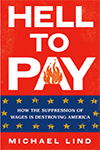
California is home to 9 International airports, 41 Military airports, 3 of the largest shipping ports in America, as well as more than 30 million registered vehicles, all of which cannot operate without imported foreign oil from other nations like Saudi Arabia, Ecuador, Iraq, Columbia, and Russia. Thus, California is a serious national security risk for America.
In his nearly six years in office, Governor Newsom has aggressively moved to shut down oil production in California. Statewide production has fallen by more than one-third under his watch.
Because California is an isolated energy island market with no incoming oil pipeline connections from other states, Newsom’s shutdown agenda has increased dependence on waterborne crude imports – sourced primarily from foreign countries like Saudi Arabia, Ecuador, Iraq, Columbia, and Russia.
The West Coast gasoline, diesel, and aviation fuels market is isolated from other supply/demand centers as California is an energy island isolated from the States East of the Sierra Mountains. The Sierra Mountains are a natural barrier that prevents the State from pipeline access to any excess oil from fracking. As such, the West Coast is susceptible to unexpected outages of West Coast refineries as it is unable to backfill an unexpected loss in supply by quickly supplying additional products from outside of the region.
Newsom’s administration policies and combative approach have led California to a precarious position as the world’s fifth largest economy now exists in a perpetual supply crunch for crude oil, aviation, gasoline, and diesel fuels, leading to high costs, price volatility, and an increased risk of shortages.
California’s aggressive shift towards unreliable solar and wind for electricity, coupled with its move away from fossil fuels, has made the State more vulnerable to fuel shortages and blackouts. This not only affects the daily lives of Californians but also impacts critical infrastructure and industries that are essential for national security.
California uses 1.45 million barrels of oil each day, or well over 520 million barrels of oil per year, for the aviation, gasoline, and diesel fuels manufactured from crude oil, as well as the oil derivatives manufactured from oil that are the basis of more than 6,000 products in our society.
California transportation fuel demands have staggering numbers:
- With all its airports, California is the largest consumer of jet fuel in America.
- For its 30 million vehicles, California is the second-largest consumer of motor gasoline among the 50 states, just behind Texas.
- Diesel fuel is the second largest transportation fuel used in California, representing 17 percent of total fuel sales behind gasoline.
California continues to reduce in-state oil production, which grows its dependency on other nations for crude oil, to its shrinking in-state refinery capabilities to meet the in-state demands for aviation and vehicle transportation fuels. With a reduction of California refinery capabilities, the State is heading in the direction of growing its importation of manufactured aviation fuels, diesel, and gasoline, and for the oil derivatives that are the basis of virtually every one of the more than 6,000 products in our society.
Read the rest of this piece at America Out Loud.
Ronald Stein is an engineer, senior policy advisor on energy literacy for the Heartland Institute and CFACT, and co-author of the Pulitzer Prize nominated book "Clean Energy Exploitations."
Photo: courtesy America Out Loud.












